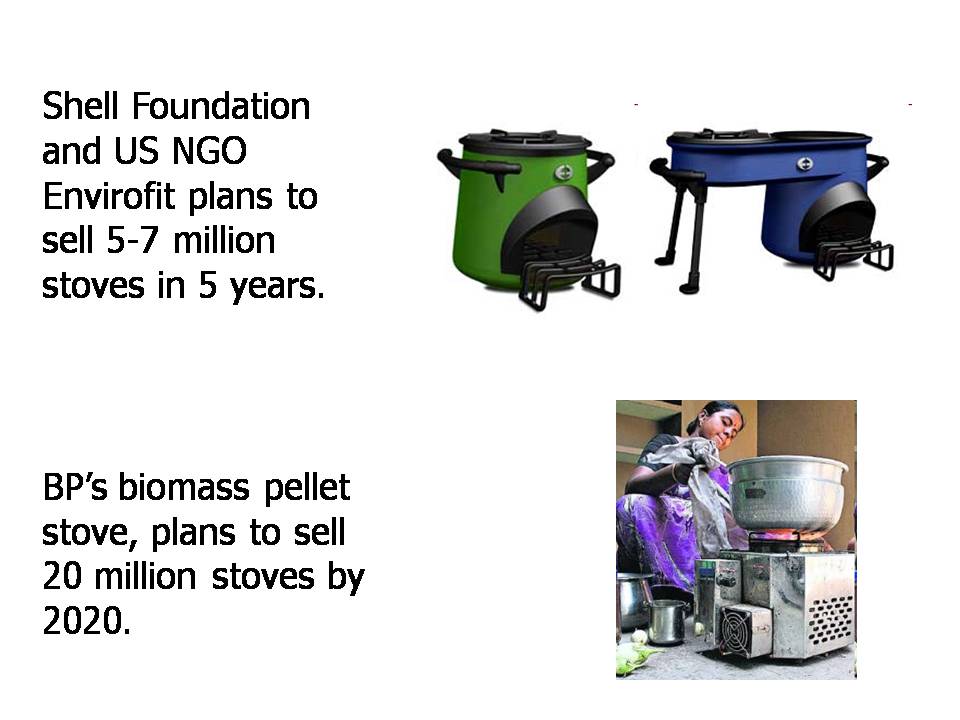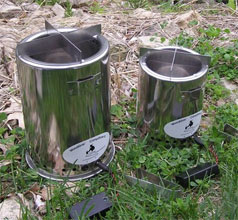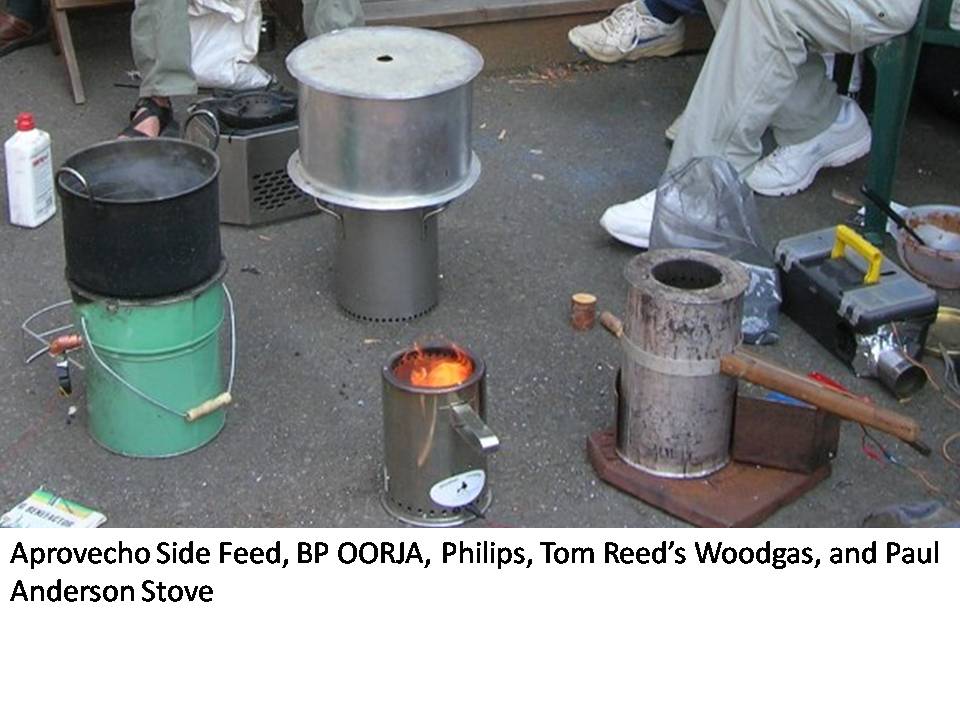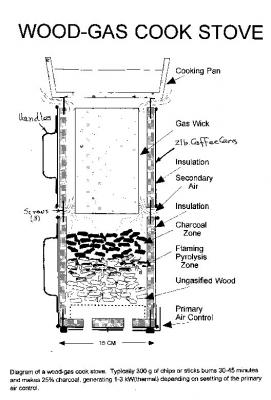WoodGas vs Wood Combustion
Tom Reed, Biomass Energy Foundation, April 2006
As a longtime proponent (since 1973) of biomass gasification and moderator of the gasification REPP group, let me define "gasification" a little more widely than the discussion below
------------------------------------------------------------------------
Coal pyrolysis produces typically 80% fixed carbon, 20% gas and volatiles. The principle step then for coal gasification is getting that carbon to be a gas with either oxygen, CO2 or water
2C + O2 ==> 2 CO
C + CO2 ==> 2 CO
C + H2O ==> CO + H2
The first reaction is exothermic, while the last two are endothermic.
So pass air/oxygen, CO2 and H2O through coal and you produce CO + H2.
Coal gasification was the principle form before 1940 and was practiced at a large scale because of the need to remove sulfur and ash. During WW II however, biomass was the fuel of choice for small gasifiers to run cars, trucks and buses.
------------------------------------------------------------------------
Biomass is typically 80% gas plus volatiles plus 20% fixed carbon. So the main problem is to convert the volatiles to CO + H2.
Pyrolysis typically occurs at 300-500C. Conventional bottom lit updraft gasifiers burn charcoal on a grate to produce hot CO-H2 which then pyrolyzes the incoming biomass to make VERY tarry gas. *(I call this a "char burning, tar making gasifier")*.
But if you pass air through a mass of biomass the temperature is 700-1000 C, and we call that "flaming pyrolysis". FP produces mostly CO
+ H2, CO2 and H2O and small amount of condensibles (tars). These then
pass through the remaining charcoal where most of the volatiles are destroyed. At the high end the condensibles are typically < 100 ppm.
At the low end, more like 2000. *(I call this a "tar burning, char making gasifier").
*
------------------------------------------------------------------------
I call the Flaming Pyrolysis process "PYROLYTIC GASIFICATION". It occurs at a continuum of temperatures from 700-1000C, depending on air/fuel ratio. At the low end, 700C, very little of the charcoal is gasified and the toplit updraft stoves produce 5-25% charcoal, depending on the moisture content of the fuel. At the high end up to 1000C the gas is VERY low tar and useful for operating engines for power and transportation and for synthesis of methanol and diesel. .
If secondary air is added to the gases after they are generated you have a very clean and hot flame. This is VERY different from direct combustion and I classify our WoodGas Campstove as a close coupled pyrolytic gasifier and combustor.
We now are selling WoodGas Campstoves at our website store along with our books on gasification (www.woodgas.com) and I recommend getting one and pondering the profound difference between the gasification and direct combustion of wood for cooking. While we have made the campstove, the principles can be applied at all scales for apartment and
field cooking around the world. We hope they will be.
Yours truly,
TOM REED
The Biomass Energy Foundation
tombreed@comcast.net
 Envirofit and BP Stoves
Envirofit and BP Stoves Woodgas stove
Woodgas stove

